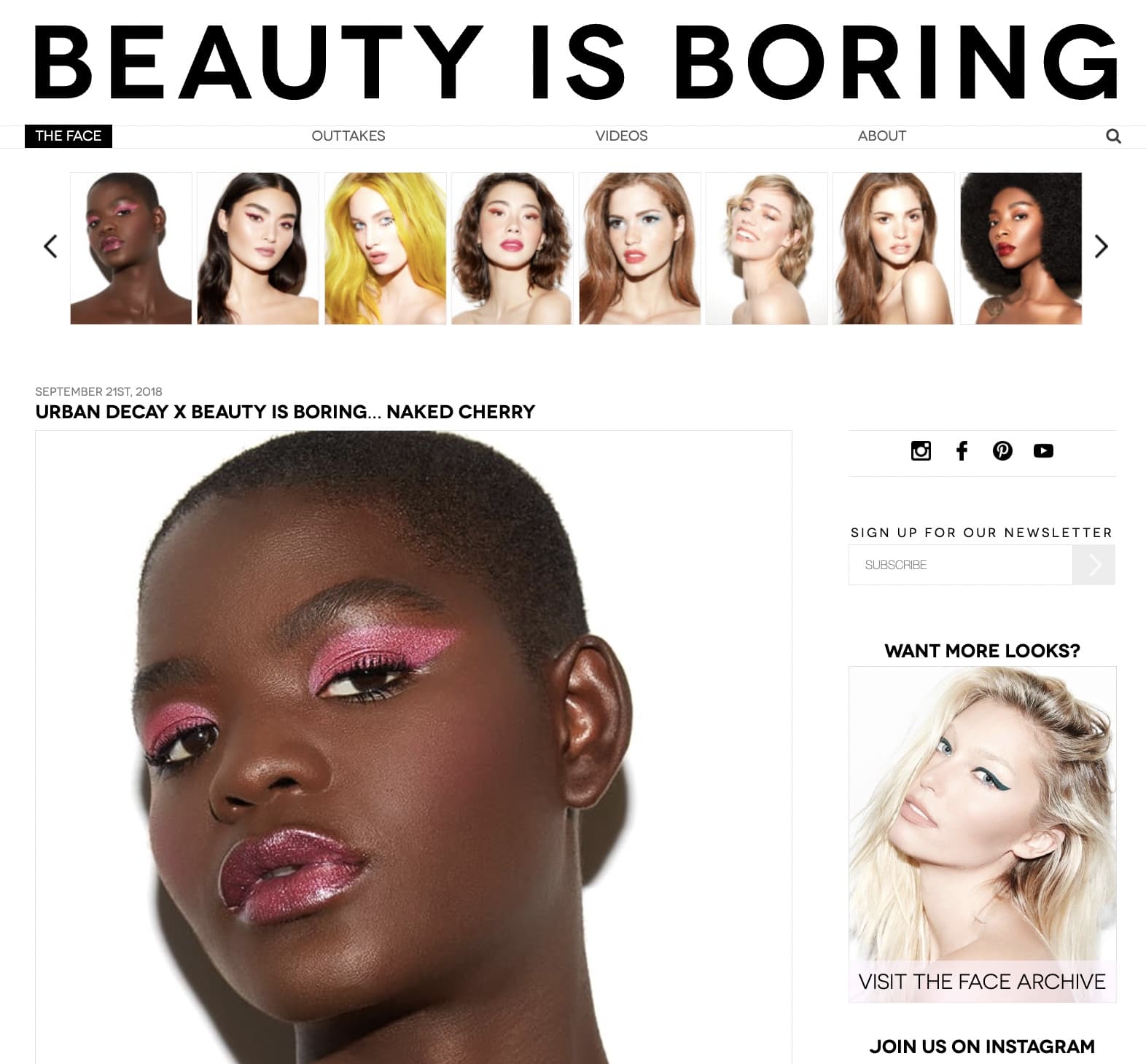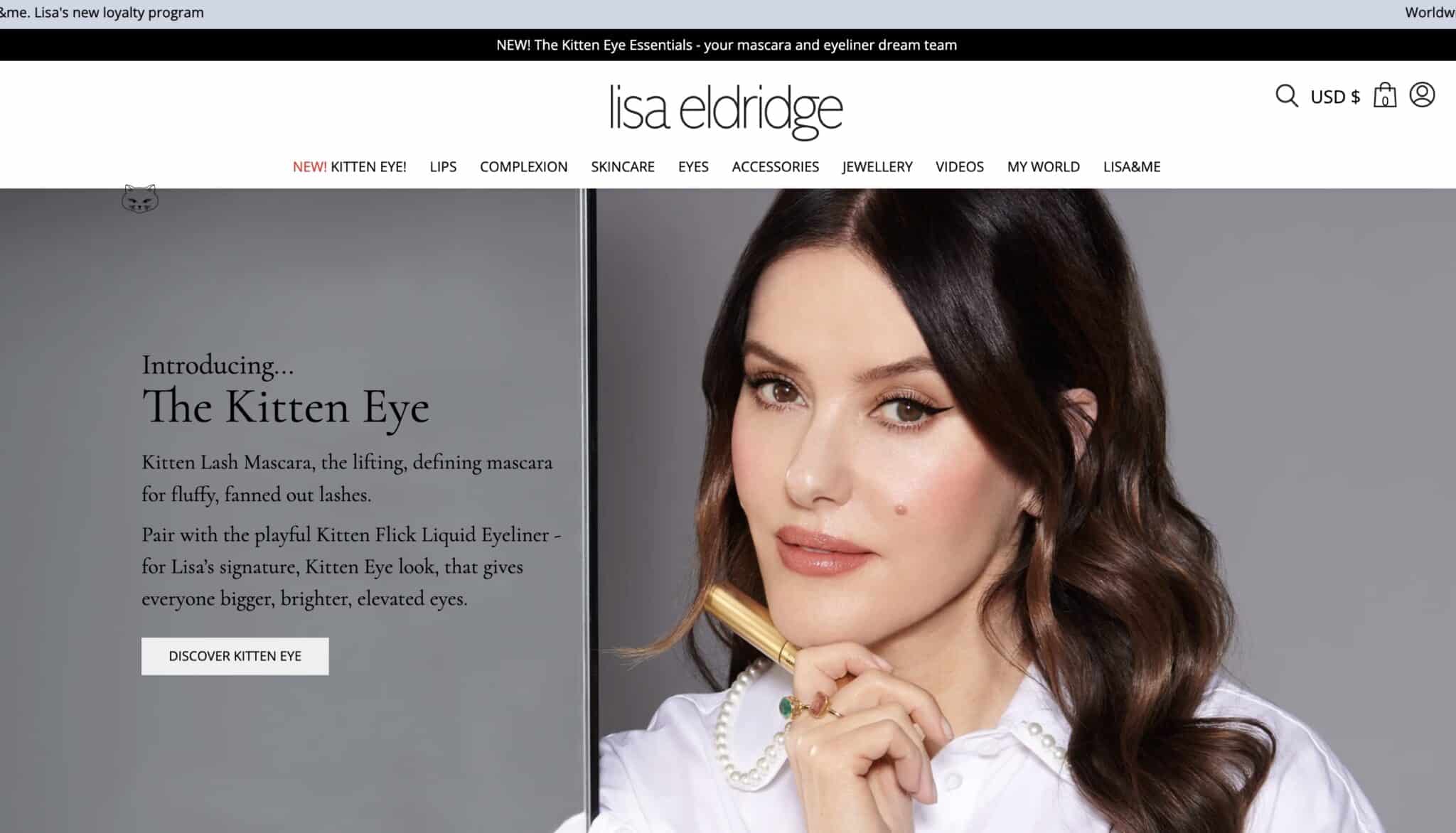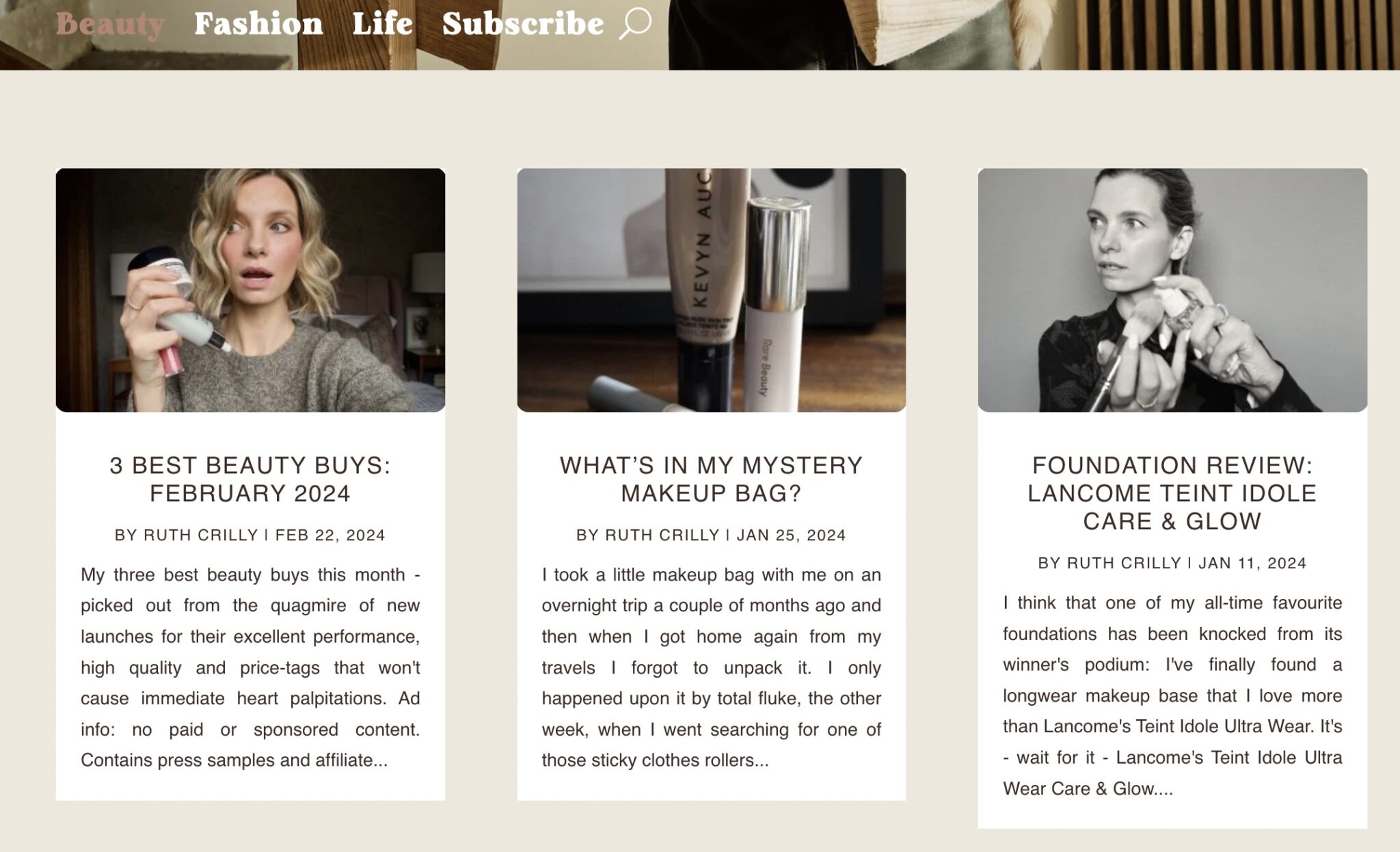If you love fashion and beauty, consider starting your own beauty blog to turn your passion into income. A beauty blog lets you connect with other enthusiasts, explore new products, and boost others’ confidence with your insights. It’s a fun way to be creative, share honest product reviews, and stay on top of the latest trends.
Although beauty blogging is competitive, you can succeed with the right website, hard work, and your unique take on beauty tips.
Wondering how to start? This article will guide you through six key steps to set up and run a successful beauty blog that earns money. Keep reading to learn more about…
Table of Contents
Why Start a Beauty Blog?
If you’re into beauty and always stay updated on the latest trends, starting a beauty blog can be a fantastic idea. Here’s why:
-
It’s Fun: Running a beauty blog is enjoyable and exciting.
-
Earn Income: You can make money through various avenues like affiliate marketing, displaying ads, and more. Beauty and skincare blogs make an average of $44,395 per year, which breaks down to roughly $21 per hour. The pay can vary, with some bloggers making anywhere between $13,000 and $101,000 annually.
-
Share Your Passion: Spread your love and knowledge of beauty topics with others who share the same interests. Build a community of beauty enthusiasts.
-
Partnerships: Successful beauty bloggers often collaborate with renowned beauty brands. They get free products, invitations to industry events, and even earn from sponsored content.
Beauty blogs are among the top earners in the types of money-making blogs. In fact, I know some beauty bloggers who make millions a year. However, they’re not willing to disclose their exact earnings for various reasons.
Examples of Successful Beauty Blogs
There are thousands of beauty blogs. So, how can you stand out from the competition? To get started, it’s smart to get some inspirations from the top earners.
Below are some beauty blogs that have a large monthly traffic and monetized their content in various ways. Let’s dive in!
Beauty Is Boring

If you want to learn makeup and beauty photography from a pro, check out Beauty Is Boring.
Robin Black is a famous makeup artist who works with models, musicians, artists, and actors.
On her site, she shows how she does makeup for each client, talks about what inspired the look, and shares what products she used.
The posts are short, the pictures are pretty, the video tutorials are useful, and the product recommendations are helpful.
Each product picture is a link you can buy from, and if you do, Beauty Is Boring gets a commission.
2. Lisa Eldridge

Lisa Eldridge is famous for doing makeup for stars like Kate Winslet and Emma Watson, and she also works with top fashion brands worldwide.
Her blog is all about four main beauty topics: makeup, skincare, inspiration, and history.
These categories give her plenty of freedom to be creative, while also keeping her blog focused.
3. A Model Recommends

Ruth Crilly used to be a model, but now she tries out, reviews, and suggests the best products available.
On her blog, she talks about body care, fragrance, haircare, makeup, and skincare.
She doesn’t just talk about any old products, though.
Every product she recommends is carefully tested by her and based on her own experience. And she’s committed to being open and honest about it all.
How To Start A Beauty Blog In 6 Steps
1. Narrow Down Your Beauty Niche
Picking the right focus for your beauty blog is key. You want something that matches your skills and interests. Luckily, in the beauty world, there are tons of options! Here are some ideas:
- Clean Beauty: Introduce natural and organic beauty products, like reviewing popular brands such as Tata Harper and RMS Beauty, and sharing DIY recipes for homemade face masks and scrubs.
- Age-Defying Beauty: Target an older audience with skincare advice and makeup tips designed to combat signs of aging. You could review anti-aging serums from brands like Drunk Elephant and share tutorials on mature-skin-friendly makeup looks.
- Men’s Grooming: Help your male readers with skincare routines tailored to their needs, recommending products like Jack Black’s Beard Oil or Baxter of California’s Clay Pomade.
- Beauty Basics: Cater to makeup beginners with easy-to-follow tutorials featuring drugstore favorites like Maybelline’s Fit Me Foundation and NYX Cosmetics’ Butter Gloss.
- Cruelty-Free Beauty: Advocate for animal-friendly products, spotlighting brands like Urban Decay and Too Faced that are known for their cruelty-free makeup options.
- Minimalist Beauty: Emphasize simplicity in skincare and makeup, showcasing versatile products like Glossier’s Milky Jelly Cleanser or recommending a minimalist makeup routine using only five products from The Ordinary.
- Luxury Beauty: Delve into the world of high-end beauty with reviews of luxury skincare lines like La Mer and makeup from luxury brands such as Chanel or Dior.
- Event-Ready Beauty: Offer inspiration for special occasions with bridal makeup tutorials featuring products like the NARS Radiant Creamy Concealer and recommendations for long-lasting setting sprays like the Urban Decay All Nighter Setting Spray.
- DIY Beauty: Share recipes for homemade beauty treatments using ingredients like coconut oil, honey, and avocado, and suggest DIY face mask ideas for glowing skin.
- Eco-Friendly Beauty: Discuss eco-conscious beauty practices, spotlighting sustainable brands like Lush and exploring refillable packaging options from companies like Kjaer Weis.
2. Choose a Blogging Platform
Opt for an easy-to-use platform like Wix or WordPress.com. These platforms offer built-in hosting and robust security features, making it simple to set up and maintain your blog without technical hassle.
You can explore the vast collection of blog templates offered by Wix or WordPress.com. For a beauty blog, consider templates like “Beauty Lounge” on Wix or “Fashionista” on WordPress.com, which are designed specifically for beauty and fashion enthusiasts.
After that, customize your chosen template to reflect your brand and engage your audience:
- Select a color palette with soft, elegant tones commonly associated with beauty, such as pastel pinks and neutrals.
- Personalize the header and footer with your logo, brand name, and relevant imagery, like makeup brushes or floral accents.
- Arrange your layout in a clean and organized manner, focusing on showcasing your content with minimal distractions.
- Use legible fonts like “Roboto” or “Open Sans” with appropriate sizes and spacing for easy readability.
- Implement a user-friendly navigation menu that categorizes your content into sections like “Makeup Tutorials,” “Product Reviews,” and “Beauty Tips.”
- Feature standout blog posts in a prominent section on the homepage to grab visitors’ attention.
- Integrate social media buttons linking to your Instagram, Facebook, and Pinterest profiles to expand your online presence.
- Craft an engaging “About” page sharing your beauty journey, expertise, and passion for cosmetics to connect with your audience.
- Add call-to-action buttons prompting readers to subscribe to your newsletter, follow you on social media, or explore more articles.
Remember to gather feedback from your audience and analyze website analytics to identify areas for improvement.
Learn more: Best Blogging Platforms
3. Select the Right Name and Domain
Choosing the perfect name and domain for your beauty blog is super important. Your blog’s name helps people recognize and trust your brand. Try using a blog name generator to come up with cool ideas that match your beauty biz.
Check out these creative and catchy name suggestions for your beauty blog:
- BeautyBelle Chronicles
- Luminescent Dreams
- BlushBrush Bliss
- Radiant Reflections
- Enchanted Elegance Escapades
- CharmChic Corner
- GleamGaze Gazette
- Ethereal Essence Experiences
- BellaBeauty Tales
- SparkleSpree Stories
- DivineGlow Dispatches
- MakeupMagic Memoirs
Remember, your blog’s name should reflect your personal style and the vibe you want your content to have. And don’t forget to check if the domain name you want is available when you’re ready to set up your website.
You don’t need to spend big bucks on a domain name. Check out domain registrars like Namesilo or GoDaddy where you can find unused domains at affordable prices.
4. Plan Your Content and Write Blog Posts
The first thing you should do when starting your beauty blog is to make a plan for what you’ll write about. Start by creating a content calendar. This will help you decide on topics and keep track of when you’ll post them.
You’ll want to have two types of posts: evergreen ones that are always relevant, and timely ones that relate to current trends or events. Keeping a consistent schedule for posting will help keep your readers interested.
When deciding what to write about, think about what your readers are interested in. For example, if your audience is interested in makeup, you could write a post like “5 Essential Makeup Tips for Beginners.” It’s important to know your audience so you can give them the content they want.
Here are some ideas for blog posts:
- Skincare Routine:Break down essential steps for a beginner’s skincare routine, tailored to different skin types.
- Makeup Tutorials: Create simple tutorials for everyday makeup looks suitable for work or school.
- Seasonal Skincare Switch-Up: Discuss how to adjust your skincare routine for different seasons and weather conditions.
- DIY Beauty Hacks: Share quick and easy beauty hacks for saving time and money, like multipurpose products or DIY solutions.
- Hair Care Tips for All Hair Types: Provide tips and product recommendations for caring for different hair textures and lengths.
- Sustainable Beauty: Discuss eco-friendly beauty practices, such as zero-waste packaging and cruelty-free products.
- Makeup for Virtual Meetings: Share tips and tricks for looking polished on video calls, focusing on makeup that looks good on camera.
- Expert Interviews: Get insights from makeup artists, hair stylists, and skincare experts.
- Skincare Ingredient: Explore the benefits and uses of skincare ingredients like hyaluronic acid and vitamin C.
5. Promote Your Blog
Once you’ve written your blog posts, it’s important to promote them too. Otherwise, not many people will read them when you’re just starting out. Here’re some strategies to drive traffic to your beauty blog:
-
Share on Social Media: Post links to your blog posts on platforms like Instagram, Facebook, and Twitter to reach a wider audience.
-
Use Hashtags: Include relevant hashtags in your social media posts to make them more discoverable to people interested in beauty topics.
-
Collaborate with Influencers: Partner with influencers or other bloggers in the beauty niche to promote your blog to their followers.
-
Guest Blogging: Write guest posts for other beauty blogs or websites to attract their audience back to your own blog.
-
Email Newsletters: Send out regular newsletters to your subscribers with updates on your latest blog posts and beauty tips.
-
Optimize for Search Engines: Use keywords related to beauty in your blog posts to improve your search engine ranking and attract organic traffic.
Building traffic to your blog takes time. Stay consistent with your efforts and experiment with different types of content and distribution methods to see what works best for your audience.
Keep an eye on your blog and web analytics to understand your audience better. Tracking visitor behavior can help you figure out which posts are resonating the most.
Don’t forget about branding. A unique logo for your blog can maintain a consistent brand identity. You can use a logo maker or a beauty logo maker for inspiration.
6. Monetize Your Beauty Blog
Once your beauty blog starts gaining traction, you can explore ways to make money from it. There are several tried-and-tested methods to monetize your blog.
Affiliate Marketing
Do you know that you can make money recommending products you love on your beauty blog? Every time someone buys through your link, you earn a commission.
Many beauty brands offer affiliate programs, such as Sephora, Ulta Beauty, and Glossier.
For more info, check out our guide on how to make money with affiliate marketing.
Advertising
Once you have reached over a thousand monthly visitors, it’s time to consider running ads on your blog using platforms like Google AdSense.
You’ll earn money based on the number of clicks or views the ads receive.
If you have over 50 thousand monthly visitors, you’ll be eligible to join Mediavine, which pays much better than AdSense.
Selling Your Own Products
You can offer premium content or courses, like a “Professional Skincare Guide” or a “Makeup Masterclass,” for a fee.
This provides additional value to readers who are willing to pay for exclusive content.
Think about what your audience needs and offer it on your site or platforms like Etsy or Coursera.
How Much Do Beauty Bloggers Make?
The income of beauty bloggers can vary a lot. It depends on factors like the number of followers, what beauty topics they cover, and how they make money from their blog. Some beauty bloggers can make a full-time income or even millions a year.
In the US, the middle amount a beauty blogger makes per hour is about $29.94, as of February 2024. But the top 25% of them make $60.34 or more per hour, while the bottom 25% make $16.83 or less.
Beauty bloggers earn money in different ways, like ads, affiliate links, sponsored posts, selling their own stuff, or offering beauty services.
The more people visit their blog, the more money they can make. To get more visitors, they can write high quality articles, share on social media, and optimize their blog for search engines.
How Long Should a Beauty Blog Post Be?
There’s no strict rule, but aim for 1,000 to 2,000 words. This gives enough info without losing attention.
Here’re some tips for writing long beauty blog posts:
- Pick a topic you love and know well.
- Research to be accurate and current.
- Organize with headings, subheadings, and bullet points.
- Use visuals like images and videos.
- Write clearly, avoiding complicated terms.
- Proofread before posting.
- Get creative with titles to grab attention.
If you’re new, start with shorter posts and work your way up as you get more comfortable.
Final Words
Starting a beauty blog is exciting, but there’s more to learn for success. A good beauty blog shares clear, helpful content, inspiring and informing readers. It should look stylish and be easy to navigate, reflecting the blogger’s passion and personality.
Be cautious of outdated advice from so-called “experts” who haven’t kept up with industry changes or built successful blogs themselves.
If you need more guidance, sign up for my online business coaching.

Jeff Smith, Founder of High Income Source, is an online business coach with a BBA in Marketing and Entrepreneurship from the University of Pennsylvania. His online business coaching program is so popular that more than 100 students have benefited and started successful online businesses under his guidance.
Jeff started dabbling in online business while he was in college, where he began with dropshipping. After college, Jeff worked at a marketing agency and freelanced as a writer. His breakthrough came when he realized the potential of blogging, leading to a $100,000 sale of a dog-focused website. His expertise includes SEO, affiliate marketing, Amazon FBA, blogging and dropshipping.